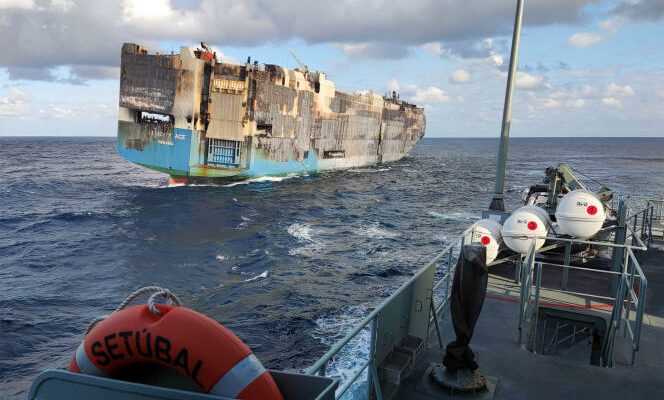1er March, the Felicity Acea freighter loaded with some 4,000 luxury cars, sank at “about 25 nautical miles [46 kilomètres] of the Portuguese exclusive economic zone”, according to the press release from the Portuguese Navy. The epilogue of a fire that broke out two weeks earlier on board this huge 200-meter-long ship.
Porsches, Bentleys, Audis – the luxury brands of the Volkswagen group – now lie at the bottom of the ocean, nearly 3,000 meters deep. According to specialists, the total amount of the cargo is estimated at between 400 and 500 million dollars. A tidy sum about which insurers are already struggling to find out who will have to pay it. On the other hand, few are interested in the bill for environmental damage.
The wreck will not be a refuge of underwater biodiversity for a long time. A ship of this size can contain more than 3 million liters of heavy fuel oil, 600,000 of diesel and 215 of lubricating oil, lists Ricardo Aguilar of the marine space protection NGO Oceana, even if after six days of navigation , the tanks of the ship which connected the port of Emden, in Germany, to Rhodes Island in the United States, were no longer filled to the maximum. “There are many other polluting components in a boat: electrical wires, paint, plastics, fire-fighting equipment or even electronics”, adds the specialist. Not to mention the fuel, oil and lithium batteries for the electric cars, which are numerous on the ship.
Difficult pursuits
If the potential for pollution for the marine ecosystem is not in doubt, it will be necessary to provide material evidence attesting to an attack on the environment to launch and support possible legal proceedings, explains Antidia Citores, lawyer at Surfrider Foundation. A “thin” oil slick was detected on the surface at the time of the sinking and would have dispersed according to the shipowner, the Japanese Mitsui OSK Lines. The European Maritime Safety Agency, present on the operation, confirmed to the World that potential cases of hydrocarbon pollution were detected on the forty satellite images ordered after the sinking, on March 3, 6 and 8.
But the implementation of legal proceedings promises to be difficult, if not impossible. Because the Felicity Ace sank in international waters, the “Wild West” of the oceans, which begins at the borders of the Exclusive Economic Zone (EEZ) of countries – 200 nautical miles (about 370 kilometers) from the coast.
You have 54.8% of this article left to read. The following is for subscribers only.
